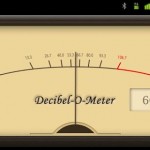When you talk about noise with regards to airguns, there are way too many opinions out there. What is “loud” to me may not be “loud” to someone else. Also, manufactures use some pretty tricky language to talk about the amount of noise, not necessarily the level of noise. Let me see if I can explain.
Look at enough marketing on the side airgun boxes and you’ll be sure to see this phrasing: “produces XX% less noise then the competitors quiet airgun…” What you may not realize is that they are not talking about DB levels but rather the cumulative amount of noises that are produced during the firing cycle. For example, when you fire most traditional metal spring powered airgun you’ll get the “twack” as it fires and slams into the compression chamber. What you’ll also get is vibration noises and an additional ringing or “twang” sounds. When you fire a gas ram, also called a gas piston or nitro piston airgun, you only get a “smack.” Therefore there are less “sounds,” i.e. noise, produced during firing. This does not actually address how loud the airgun may actually be.
To determine the actual “loudness,” you need to get a DB meter. There are various degrees of quality measuring devices out there, and even some android and iPhone apps that do pretty darn good for getting a ballpark on how loud your airgun may actually be. Having fired many, many different airguns over the years, both indoors and out, I can tell you that anything under 100 DB would be considered a medium quite airgun. When you start getting over 100 DB, you are starting to get “loud” and may attract attention from your neighbors. But this is still all arbitrary if you can’t put commonly knows noise levels to DB ratings. I’ve pulled some data from the web to help us put all this in perspective. See below:
To give you an idea of how a dB SPL measurements relate to daily life, a listing of the approximate sound pressure level for various sounds is provided below.
(Source: http://trace.wisc.edu/docs/2004-About-dB/)
| Sound Environment | Sound Pressure Level (dBA SPL) | Approximate loudness with regard to ordinary conversation |
|---|---|---|
| Threshold of hearing | 0 | Don’t hear anything |
| Broadcast studio interior or rustling leaves | 10 | 1/32nd as loud as conversation |
| Quiet house interior or rural nighttime | 20 | 1/16th as loud |
| Quiet office interior or watch ticking | 30 | 1/8th as loud |
| Quiet rural area or small theater | 40 | 1/4th as loud |
| Quiet suburban area or dishwasher in next room | 50 | 1/2 as loud |
| Office interior or ordinary conversation | 60 | Ordinary Conversation |
| Vacuum cleaner at 10 ft. | 70 | Twice as loud |
| Passing car at 10 ft. or garbage disposal at 3 ft | 80 | 4 times as loud |
| Passing bus or truck at 10 ft. or food blender at 3 ft. | 90 | 8 times as loud |
| Passing subway train at 10 ft. or gas lawn mower at 3 ft. | 100 | 16 times as loud |
| Night club with band playing | 110 | 32 times as loud |
| Threshold of pain | 120 | 64 times as loud as conversation (twice as loud as night club) |
That chart should give us all a better idea of how DB number rate to things we experience in our day to day life. As you can see, 100 DB is loud, dramatically so if it’s a sustained 100 DB. Fortunately airguns generate a very quick report which can make that 100 DB seem a lot quieter that it actually is. When you are considering shooting airguns in your neighborhood, please make sure to check with the local zoning administration regarding their noise ordinance. This way you can know, before you pull the trigger for the first time, if you are within the legal limit for the noise nuisance limitations. Every town or municipality will be different so be sure to do your homework before you setup that back yard range and invite all your buddies over for an airgun shooting party.
We, that is all airgunners, represent the great sport of airgunning. When we seek to operate within the guidelines of the law in responsible ways, it puts our best foot forward for the sport and our future. If you are concerned about a particular airgun and the noise it produces, do your research on line and don’t be afraid to ask manufacturers for the DB levels. You can also contact us here at AirgunDepot and we’ll do the best we can to point you in the right direction.
